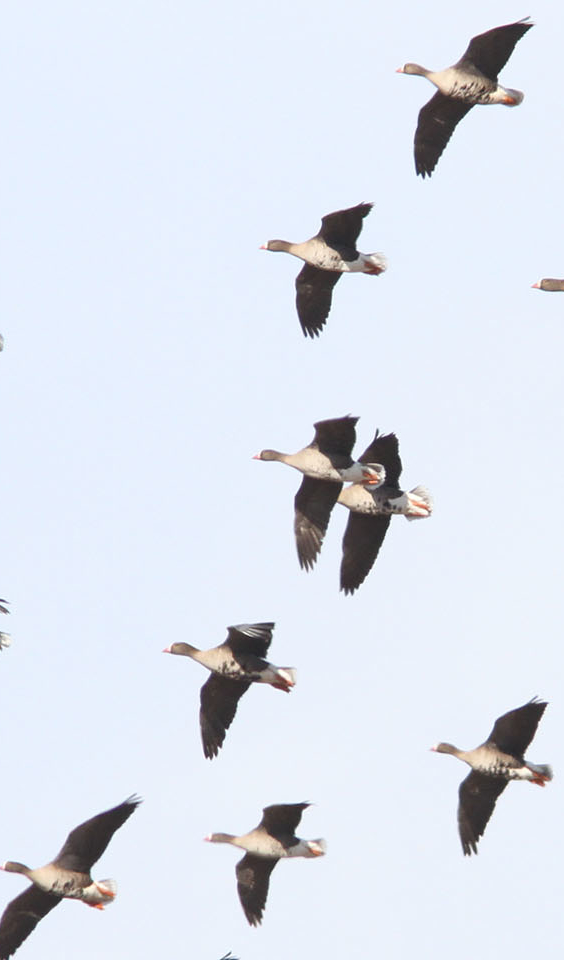

The look-alike dilemma
One of the biggest challenges in the conservation of the species is that during migration, the Lesser White-fronts (Anser erythropus) are mixing with White-fronted Geese (A. albifrons) which is an important quarry species in most countries within the range of the Lesser White-fronts.
Separating the Lesser White-front and the White-front – even with the “clearly distinguishable” adult plumage – is very difficult even for experienced ornithologists.
In a hunting situation, it is practically impossible and therefore the only effective way to protect the Lesser White-fronts from hunting at the few and limited key sites, is to ban hunting of all white-fronted geese in the periods when Lesser White-fronts are present.
The biggest differences between the two species (in adult plumage) are:
- the neck of the Lesser is shorter and darker brown
- the head of the Lesser is more box shaped and a uniform dark brown
- the bill of the Lesser is stubby, almost as long as its height at the base, and intensively pink
- the white front blaze of the Lesser reaches higher up to the crown
- the Lesser White-front always has a bright yellow eye ring; the ring is however not visible at long distances, and the White-front can also, although rarely, have a yellow eye ring
